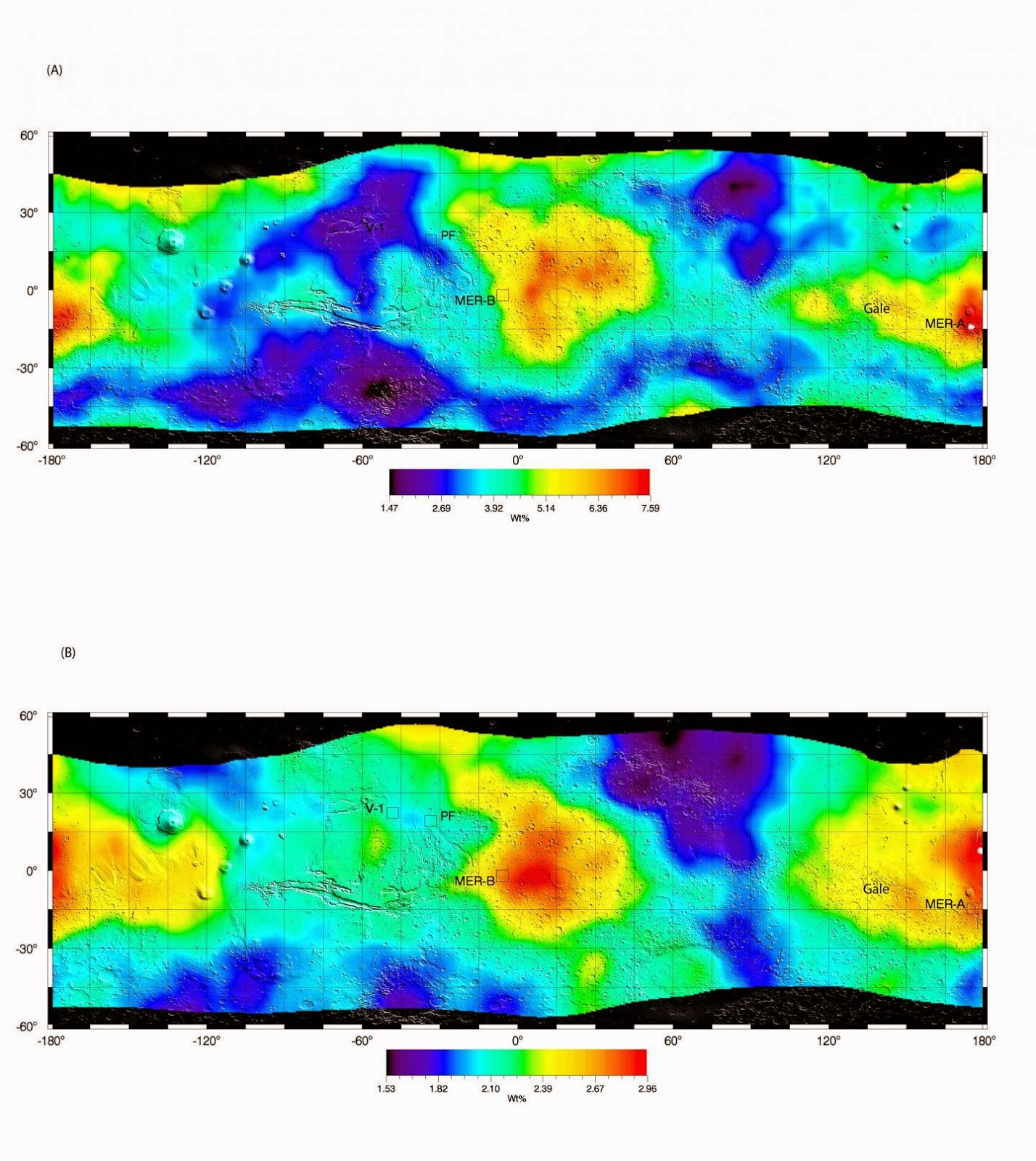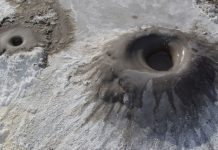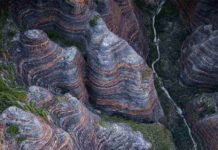
A research team led by LSU Geology and Geophysics Assistant Professor Suniti Karunatillake reveals a spatial association between the presence of sulfur and hydrogen found in martian soil. The work by this multi-institutional team of researchers from Georgia Tech (James Wray), Stony Brook University (Scott McLennan and Deanne Rogers), CNRS/ Université Fédérale Toulouse Midi-Pyrénées (Olivier Gasnault), Cornell University (Steve Squyres), and University of Arizona (William Boynton) may in turn identify hydrous iron sulfates as key carriers of H2O in bulk martian soil.
The gamma spectral signature of hydrogen serves as a possible indicator of water, a primary driver of weathering and life processes on Earth. The analyzed elemental data from the Gamma Ray Spectrometer onboard the Mars Odyssey orbiter was published in Geophysical Research Letters on Nov. 22, 2014.
The study indicates that within the southern latitudes of Mars, sulfur compounds are a key hydrated phase. This is revealed in part by water-to-sulfur molar ratios that fall within expected ranges corresponding to hydrated sulfate compounds. Reinforcing the data, hydrogen and sulfur correlate compellingly in the southern latitudes. The molar ratios were observed over 80 percent of Mars’ southern hemisphere. Consequently, sulfate compounds, acting as primary contributors of H2O, may also influence modern water-driven processes on Mars.
“Sulfur variation plays an important role as a control on inferred fluid pH, alteration environments, and water activity while the variation in hydration state reinforces the compelling possibility of H2O bound primarily in sulfates in the southern hemisphere,” Karunatillake said. “This applies specifically to bulk soil at decimeter depths, including the possibility that geochemical processes of iron sulfate-rich Paso Robles soil in Gusev Crater may have been more common at regional scales in ancient martian terrain than previously appreciated.”
The team suggests that further observations by the Curiosity rover in Gale Crater could move forward models of aqueous processes on Mars. For example, recent analyses of “Rocknest” soil samples suggest complementary modes of soil hydration in the Gale Crater area.
Reference:
S. Karunatillake, J. J. Wray, O. Gasnault, S. M. McLennan, A. D. Rogers, S. W. Squyres, W. V. Boynton, J. R. Skok, L. Ojha, N. Olsen. Sulfates hydrating bulk soil in the Martian low and middle latitudes. Geophysical Research Letters, 2014; 41 (22): 7987 DOI: 10.1002/2014GL061136
Note : The above story is based on materials provided by Louisiana State University .










